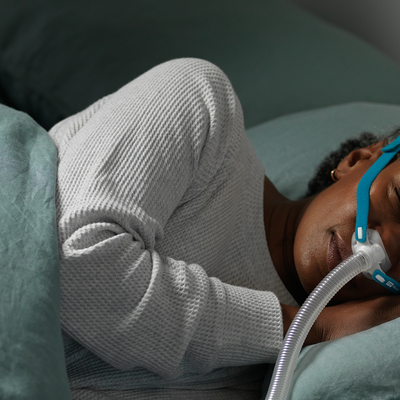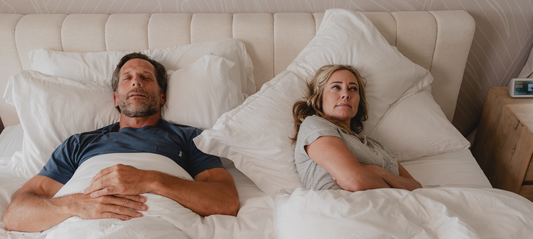If you’re among the 25 million+ Americans who have sleep apnea, you may be wondering what to do after your diagnosis. You need help addressing the restless nights and daytime sleepiness that your sleep apnea has caused you for numerous nights. But where do you start?
Finding a solution to a problem while you sleep might seem overwhelming, but sleep medicine has come a long way. There are several treatment options available to help manage your sleep apnea symptoms so you can get a good night’s rest.
Lifestyle changes
Before trying any medical devices or invasive medical procedures, your doctor will assess your overall health. Lifestyle changes can significantly improve symptoms of obstructive sleep apnea (OSA) for some people. Losing weight, eating a healthy diet, and exercising are all proven to improve quality of life for people who have OSA. Quitting smoking and avoiding alcohol also improves OSA symptoms. However, this approach doesn’t work for central sleep apnea (CSA).
Oxygen
One of the biggest problems with sleep apnea is that it reduces the amount of oxygen circulating in your body. This is a direct result of the interrupted breathing that sleep apnea patients experience. Some patients benefit from oxygen therapy while they sleep.
Studies show that sleep apnea patients who have oxygen therapy while they sleep have higher oxygen saturation, but there’s a catch. These patients also stopped breathing for longer periods of time while they slept, so it might not be the best treatment option.
CPAP & BiPAP
If you’re familiar with sleep apnea, odds are you’ve heard of continuous positive airway pressure (CPAP) machines. CPAP machines work by using positive pressure to keep your airway open while you sleep. Despite being highly effective, only about two-thirds of sleep apnea patients use their CPAP as directed.
Some people who don’t use their CPAP as recommended might benefit from a bilevel positive airway pressure machine, or BiPAP. Unlike most CPAP machines, which use the same level of air pressure continuously, BiPAP machines allow you to change the level of pressure for inhaling and exhaling, making them easier to adjust to. Newer CPAP models have limited features that allow similar adjustments, but not to the same extent as a BiPAP machine.
Both machines keep your airway open with positive pressure, but CPAP is the standard positive airway pressure treatment for sleep apnea patients. BiPAP is usually reserved for patients who aren’t able to adjust to sleeping with a CPAP.
Your insurance might cover the cost of your CPAP or BiPAP machine. Make sure you check your benefits to see how it might help.
Oral appliance
Using an oral appliance is a less common treatment option for people who have mild OSA. There are a few different options:
Oral appliances aren’t usually recommended for people who have severe OSA unless other treatments aren’t an option. People who have CSA cannot use oral appliances to treat their condition.
Many insurance plans cover the cost of oral appliances for people who have sleep apnea. Make sure you check your benefits to see what your out-of-pocket costs might be.
Surgery
The most invasive treatment option for sleep apnea is surgery. An ear, nose, and throat (ENT) surgeon or an oral and maxillofacial surgeon can perform surgery to treat sleep apnea, but which one you need depends on the type of surgery you choose with your doctor. Some procedures adjust the upper and lower jaw, others remove excess tissue in the back of the throat, and others reduce the size of the tongue.
If you’re considering surgery to treat your sleep apnea, talk to your doctor to decide which surgical option is best for you. After successful surgery, you’ll be able to sleep without CPAP or any other device that treats sleep apnea.
Lofta
Getting a sleep apnea diagnosis and choosing a treatment option is a smooth process with Lofta. Our doctors can evaluate your symptoms, send you a home sleep test, and diagnose sleep apnea completely remotely. You don’t have to step foot in a doctor’s office throughout the diagnosis process.
After you receive a diagnosis, we make it easy to get sleep apnea treatment. We have several CPAP machines and accessories for you to choose from. If CPAP isn’t your cup of tea, we also have Phillips NightBalance. Wear it while you sleep and it’ll vibrate to remind you to sleep on your side instead of on your back to prevent sleep apnea symptoms.
Everyone deserves a good night's rest. Let Lofta help you get it with our innovative sleep apnea solutions.










































